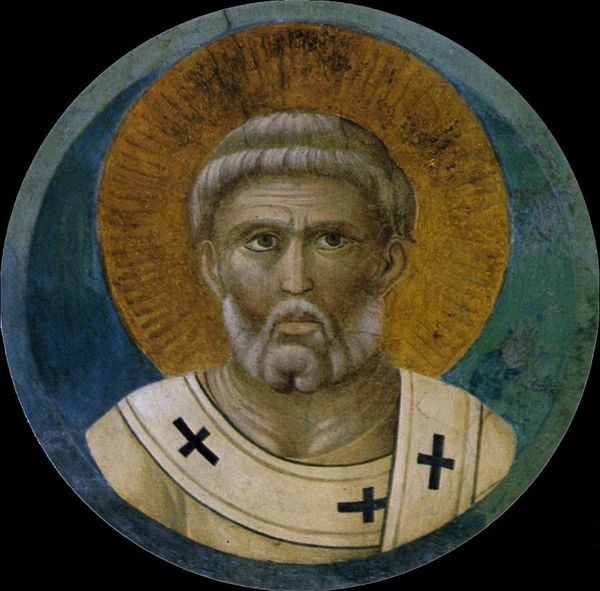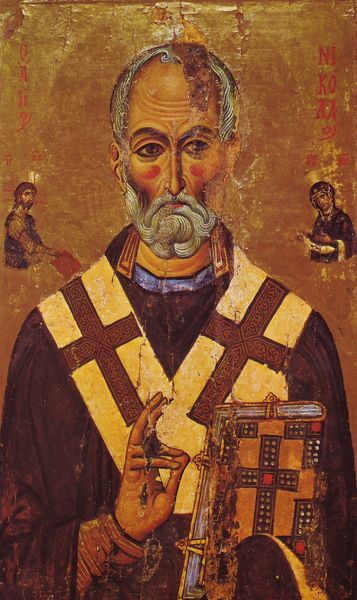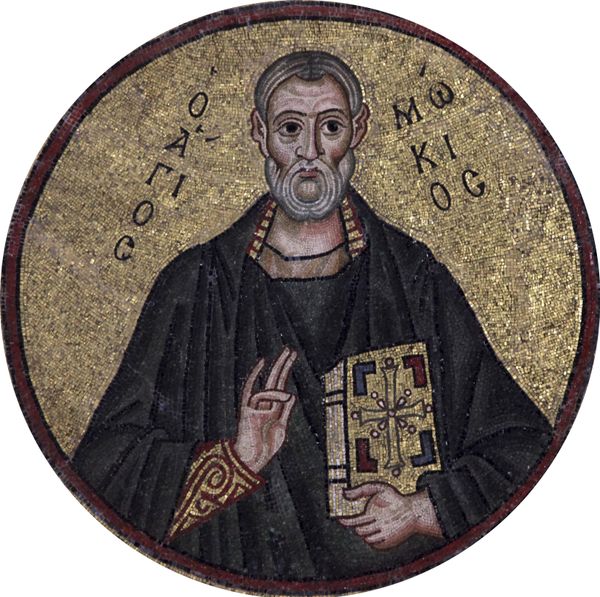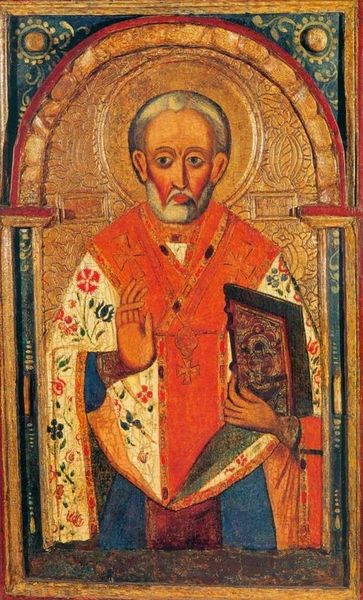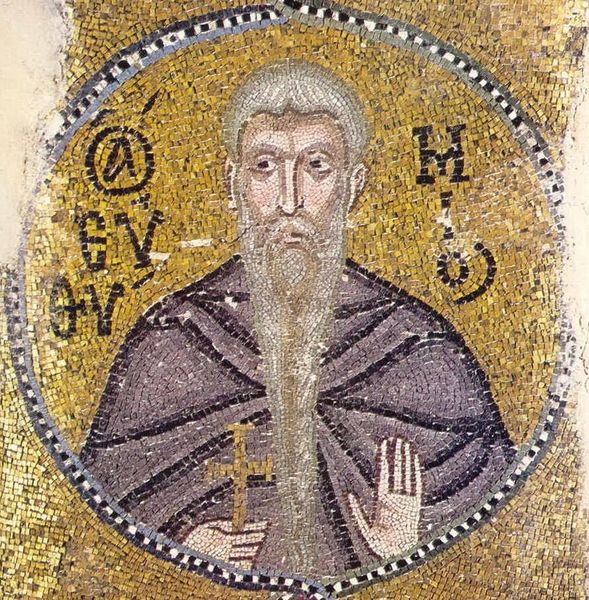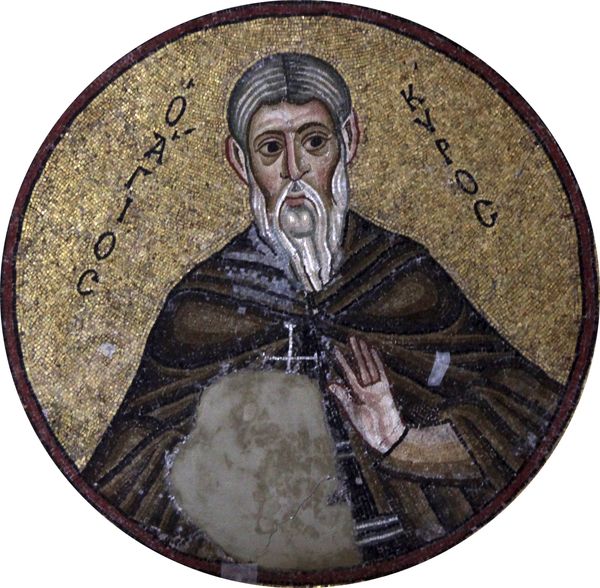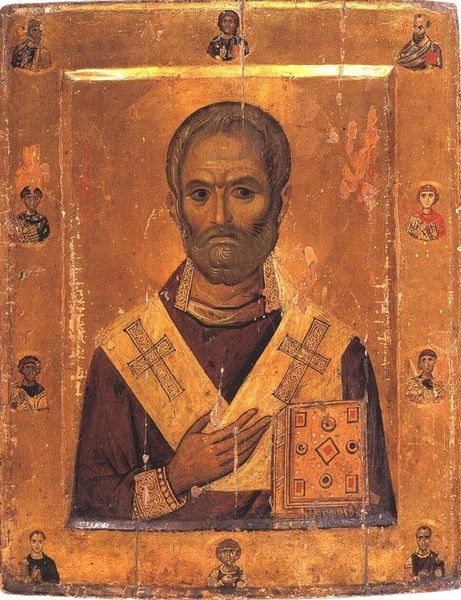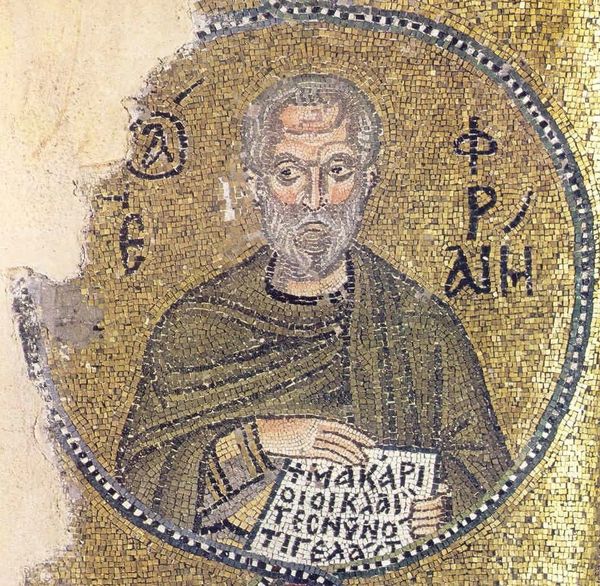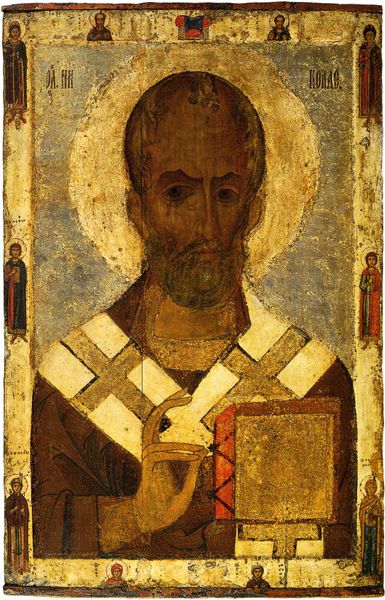
mosaic
#
portrait
#
mosaic
#
byzantine-art
#
figuration
#
mixed media
Copyright: Public domain
Curator: Let's examine this Byzantine mosaic, "Clemens I," dating back to around 1030. You can find it here in the Saint Sophia Cathedral in Kyiv. What's your initial impression? Editor: My first thought goes to its tactile presence. Each individual tessera seems carefully placed, revealing a monumental feat of material labor that has miraculously endured. Curator: Indeed. Focusing on its formal qualities, observe the flattened perspective and the hierarchical scale, which are quite typical of Byzantine art. Notice also how the tesserae create a shimmering effect, an interplay of light and shadow. Editor: That shimmer speaks to the intense manual work invested in shaping and fitting each piece. It's not just the visual effect, but the sense of embodied labor, a devotion expressed through repetitive gestures. And what about the sourcing? Where did the artisans get those stones, the glass, and gold? Curator: Interesting point. Semiotically, consider the image as an icon. Clement is depicted frontally, with a nimbus, symbolizing his saintly status. The dark crosses embroidered on his liturgical vestments represent his allegiance to God, his faith, and spiritual calling. Editor: But that clothing also represents human creation. Someone spun the thread, wove the fabric, embroidered it, most likely in laborious conditions, transforming humble materials into an emblem of status. Curator: Precisely. The artist uses symbolic representation to convey complex theological concepts and hierarchies through relatively simple elements. Editor: Simple perhaps in concept, but the mosaic medium transforms those ideas through sheer, physical persistence. The way those humble bits of rock and glass catch the light tells a material story beyond the religious narrative. Curator: A powerful reminder of how form and content intertwine! Editor: It urges us to remember the physical context within a specific historic production as it creates this enduring representation. Thank you for calling attention to it!
Comments
No comments
Be the first to comment and join the conversation on the ultimate creative platform.



